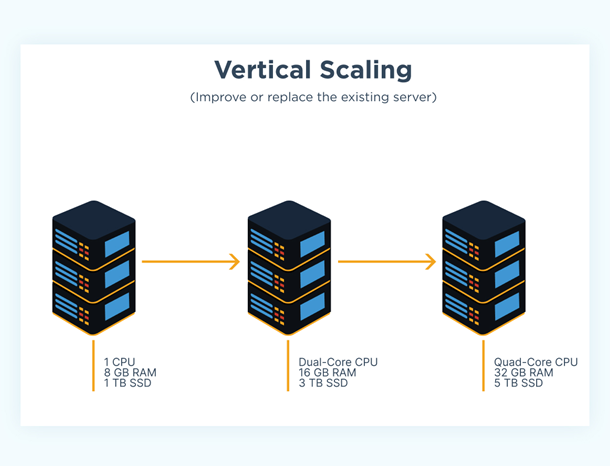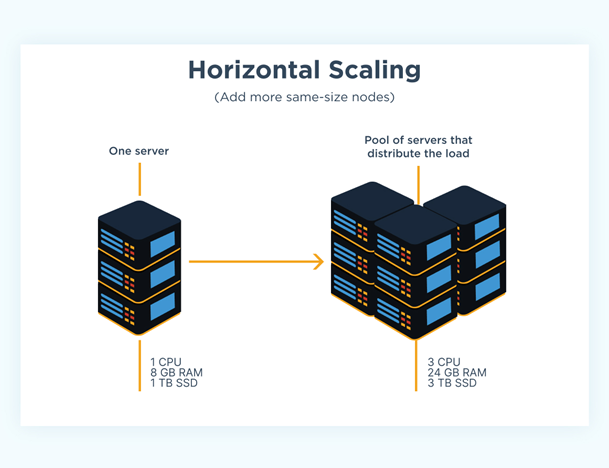Insights
Articles
23 October 2025
5 min read
How to Build Scalable Digital Solutions: A Complete Guide for Businesses in 2025
Praise Ohans
Author

Introduction
In 2025, digital scalability has become the new benchmark for remaining competitive in the corporate world. The discussion around businesses have shifted from the need to go digital to how scalable their systems are. Scalability involves building digital solutions that can handle more users, data, and demand without affecting functionality. We are at a point where we can say that the scalability of a company’s software now determines whether it leads or lags behind.
Digital scalability goes beyond having modern software. It is possible to have modern software that still lacks a system capable of scaling. Irrespective of your business type, be it an e-commerce store, a fintech app, or a logistics platform; the strength of your backend architecture defines how far your operations can run. Businesses that invest early in scalable systems position themselves to serve customers consistently while being ready for sudden surges in demand.
This blog explores what it truly takes to build scalable digital solutions that support sustainable business growth in 2025. From system architecture to cloud technology, you will learn what it takes to design infrastructure that grows with you.
What Scalability Really Means in 2025
Like earlier said, scalability in 2025 has evolved beyond the traditional idea of just improving system performance. It now represents the ability of digital solutions to respond to changing business needs, fluctuating demands, and rapid technological shifts without breaking down. In an era where agility defines success, scalability is key to the growth of every business.
Vertical vs Horizontal Scaling

Vertical scaling (scaling up) increases the power of existing infrastructure. It is like upgrading one’s office computer by adding more RAM or a faster processor. It improves performance within a single system and can work effectively for smaller workloads.

Horizontal scaling (scaling out), on the other hand, takes a different approach. Instead of relying on one powerful machine, it spreads tasks across multiple servers or nodes. This creates a distributed environment where workload and traffic are shared, ensuring consistent performance even during peak usage.
Why Scalability Drives Business Growth
Reliable system performance builds trust. Users are more likely to stay loyal when their experiences remain smooth, even as your customer base grows. Scalable systems also reduce operational costs, since resources automatically adjust to match demand. This efficiency frees up capital for product development and marketing, which are key drivers of business growth strategies in 2025.
Companies that invest in scalable digital systems grow faster and operate more efficiently than those built on rigid, legacy infrastructure. According to Gartner, more than 85% of organizations will embrace a cloud-first principle by 2025. Furthermore, organizations that successfully implement cloud-native architectures achieve 2.5 times faster time-to-market for new products and services, while also reducing infrastructure costs by an average of 40% through optimized resource use and better operational efficiency.
Building Scalable Digital Solutions
The foundation of every scalable digital solution lies in strong architecture and the right technology stack. Modern businesses have moved beyond heavy monolithic systems that struggle under demand. They now rely on microservices architecture, which breaks applications into smaller, independent components that can grow at their own pace. This structure improves flexibility and development speed. It is the same model that powers global platforms such as Netflix, Amazon, and Uber, allowing them to serve millions of users reliably every single day.
A stateless application design is the foundation of this system. It works by keeping user data separate from the servers that process requests. This means that no single server is tied to a specific user, so any available server can respond when someone uses the app. This results in smoother performance, better handling of heavy traffic, and faster recovery in the event that something goes wrong.
At the same time, an API-first approach allows different parts of the system, and even external tools, to communicate easily. This creates a connected structure that is easy to expand, update, or integrate with new technologies as the business evolves.
Selecting the right technology stack is equally important for scalability. Languages such as Node.js, Go, and Java are built to handle high-traffic environments, while Python excels in data-intensive applications powered by artificial intelligence. For the database side of things, NoSQL solutions like MongoDB manage unstructured data effectively through horizontal scaling as discussed earlier, while distributed SQL databases use sharding and replication to preserve performance at scale. Implementing caching tools such as Redis ensures that frequently accessed data loads quickly, keeping user experience consistent even during traffic surges.
When it comes to infrastructure, cloud-based solutions are a popular choice. Platforms like AWS, Azure, and Google Cloud enable automatic resource scaling and geographic distribution that traditional setups cannot match. Many enterprises now run hybrid or multi-cloud environments that combine public and private resources in order to balance flexibility, compliance, and cost efficiency. This mix of modular architecture and adaptive cloud technology defines what it means to build scalable digital solutions in 2025.
Scaling in Practice
One thing worthy of note is that scalability is not a day’s job; it must be sustained constantly. Sustaining scalability requires constant optimization. Regular load testing helps teams prepare for unexpected traffic spikes, while automated monitoring and alerting tools identify performance issues before they cause downtime. Scalability is a constant practice, where developers track performance metrics, optimize queries, and refine caching layers to maintain seamless operation.
Emerging trends in 2025 are changing what scalable systems can do. Cloud elasticity allows businesses to expand resources instantly when demand increases, then scale back when it drops. Serverless computing removes the burden of managing infrastructure, letting developers focus entirely on building products.
Digital transformation is cutting across every industry in the world, and businesses must align themselves for them to remain relevant in the future. Digital transformation is here, and it is here to stay.
Conclusion
Scalability is the foundation of business growth in 2025. From microservices to API-driven architectures and cloud elasticity, companies that prioritize scalability adapt faster, serve users better, and stay ahead of competition. Check out the businesses that are thriving today, and you’ll see that scalability is a huge part of their strategy for efficiency and expansion.
If your digital infrastructure still struggles to keep up with growth, there is no better time to improve it than now. Systems that scale effortlessly are designed with intent, expertise, and future-proof technology choices, which are our key drivers at Gozade. Ready to build scalable digital solutions that grow with your business? Talk to our experts today and start transforming your systems with scalability in mind.
TAGS:
Build what matters, with Gozade
Let's Talk
Gozade
HOUSE NO. 33C, ROAD 2, IKOTA VILLA ESTATE, IKOTA, LEKKI, LAGOS
+2349032770671, +2349032942619
Gozade builds smart digital solutions that help businesses grow and scale with confidence.

